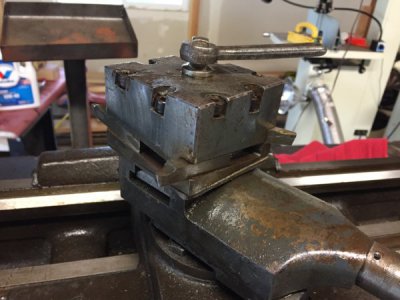- Joined
- Dec 20, 2012
- Messages
- 9,422
Mikey, that's a great explanation. For a little further clarification and understanding, CCMT and CCGT (ignoring for now the digits that follow) are the same except molded vs ground, aren't they?
For the sake of trying out inserted carbide, especially for small boring operations where my homebrew attempts have been too flexible to be considered useful or effective, I ordered some a few weeks ago from eBay. But the designation is slightly different, specifically CCMT060204-HM YBC251. I don't know how much of that is specific to the generic Chinese model number, but I can't help but notice that the "251" at the end is at least reminiscent of the "32.51" and "22.51" you cited. Do you have any insight here?
I hate using eBay links in fora since the links will expire while the post will be around for a LONG time, but the item number for the sake of today's discussion is 322381018603.
Thanks!
Jon, I made a typo on the insert designations that I just corrected. However, that doesn't impact on your question.
The insert size varies with the size of the bar but is usually consistent within a set. Your bars use a CCMT 21.51 insert and all the bars should take the same size. It will also take a CCGT 21.51 or 21.52 insert; the CCGT has a ground edge and are very sharp. The AK grade of CCGT cutters are very sharp. The difference between the 21.51 and 21.52 is just the nose radius. For boring bars, the smaller radius is better because it allows for finer cuts without chatter.
SCLCR tooling is popular for good reason. Both the turning and boring tools have a 5 degree positive lead. For boring bars, this allows you to bore a flat bottom bore without the leading edge of the insert rubbing like a zero lead tool will. Positive lead bars also reduce radial cutting forces provided you can bury the nose radius in the cut. It is for this reason that the smaller nose radius insert is a good choice; it allows you to take a smaller depth of cut without the radial forces causing chatter. It also allows for a smaller depth of finishing cut without chattering, although that smaller nose radius may not give as good a finish as a larger nose radius will. For most of us, finish is secondary to accuracy so I would suggest you go with the 21.51 insert.
Jon, keep in mind that if your boring bars are made of steel instead of carbide, you will have an overhang allowance of about 4:1. If you pay attention to that and stay within this allowance then those bars should cut well for you. Pay attention to speeds as well; the insert maker will give you SFM recommendations for your insert. Most of the time, you will be boring at the max speed your lathe can achieve. Feeds are whatever produces a coiled chip and it may be faster than you might think. Coolant helps to coil the chip as well so use cutting oil if you can (except for brass and cast iron).
I apologize for the screw up/typos I made earlier. I typed it, ran out of the house for a dental appointment, and only just now realized I screwed up.


